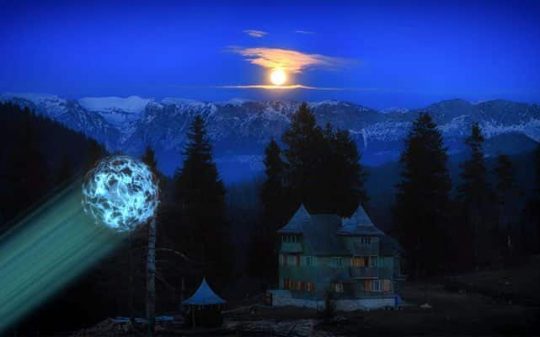There’s a place in Romania where unusual sightings occur on a regular basis. From animated UFO sightings to spooky events that seem to defy all logic, this place appears to be craved by every UFOholic.
Located on a remote pasture in the Arges county, the mystical place dubbed “The Sanctuary” offers a panoramic view of the neighboring mountain chain of Bucegi, renowned for the numerous out-of-place artefacts discovered there, but also for their richness in gold.
Not far from here lies “The Sphinx,” an ancient monument considered to be a natural formation that strongly resembles the face of a human being. Legend has it that Zamolxis – the god of the ancient Romanian people (the Dacians), made his home and sanctuary beneath these mountains. Different accounts speak of how Zamolxis vanished deep within the labyrinth of caves to consult with his oracles about the faith of the vast region governed by him.
In 2009, the book Transylvanian Sunrise was published, causing an unprecedented debate among conspiracy theorists. The co-author of the book, Peter Moon, claimed to have worked in tandem with a secret intelligence officer of the Romanian government who revealed to him classified information about an unusual discovery dug-up by the Pentagon. The book reads the following:
“In 2003, the Pentagon discovered through the use of satellite technology, an anomaly beneath this ancient sphinx. Through the highest levels of Freemasonry, the Pentagon was able to secure an alliance with the most secret department of the Romanian Intelligence Service which is known as Department Zero.”
The find consisted in massive underground tunnels that led the U.S and Romanian governments to ancient and advanced technology. Some claimed they have found a Vimana, while others speak of a stargate, or a holographic hall of records buried underneath the Sphinx. Although the book is considered pure fiction by many, the possibility of such a discovery is extremely likely, and here is why:
First of all, there are countless local legends speaking of this mythical place. There are hundreds of unexplored caves alongside the mountain range of Bucegi, not counting the ones already discovered.
Secondly, there’s a written account dating from the First World War telling how the peasants from Dobrogea were using underground tunnels that stretched thousands of kilometers beneath the Black Sea. Through these underground passages they lead their herds of sheep into Turkey and Asia Minor, where they would sell them for a considerable profit.
There are two known entrances in the region of Dobrogea, but are now sealed due to national security reasons. The underground passage could be linked to the ancient tunnels that have recently been discovered in the Cappadocia region of Turkey, making this story less likely to be just a myth or coincidence.
In the 80s, a group of men working on the canal that unites the river Danube to the Black Sea, stumbled across another entrance that carried them from Romania to Bulgaria underneath the vast mass of water. All these tremendous discoveries are being suppressed by the Romanian and foreign governments.
However, there are many historians who acknowledge the long heritage of the Romanian people and the mysterious ways their ancestors ruled over the land thousands of years ago. According to Marja Gimbutas, professor at U.C.L.A, their bloodline stretches a considerable span of time.
“Romania is the hearth of what I name Old Europe, a cultural entity of 6.500 – 3.500 B.C., based on a matriarchal society, theocratic, peaceful, loving and creators of art, that preceded the patriarchal Indo-European societies of warriors from the bronze and iron age. It became evident that this ancient European civilization precedes the Sumerian by millennia. It was a period of harmony, in full agreement with the creator energies of nature.”
Of course, there are also the clay tablets discovered at Tartaria which bear an old writing similar to that of the Sumerians, but since they were dated to about 6,000 B.C., it directly contradicts the general accepted theory according to which the first writings belonged to the Sumerians and ancient Egyptians. Marco Merlini, an Italian archaeologists who studied the artefacts in detail, expressed his point of view:
“The bones, as well as the tablets are very old. It is a certainty. It is our turn to think that writing began in Europe, 2.000 years before the Sumerian writing. In Romania we have a great treasure, but it does not belong only to Romania, but to the whole of Europe.”





Trackbacks/Pingbacks